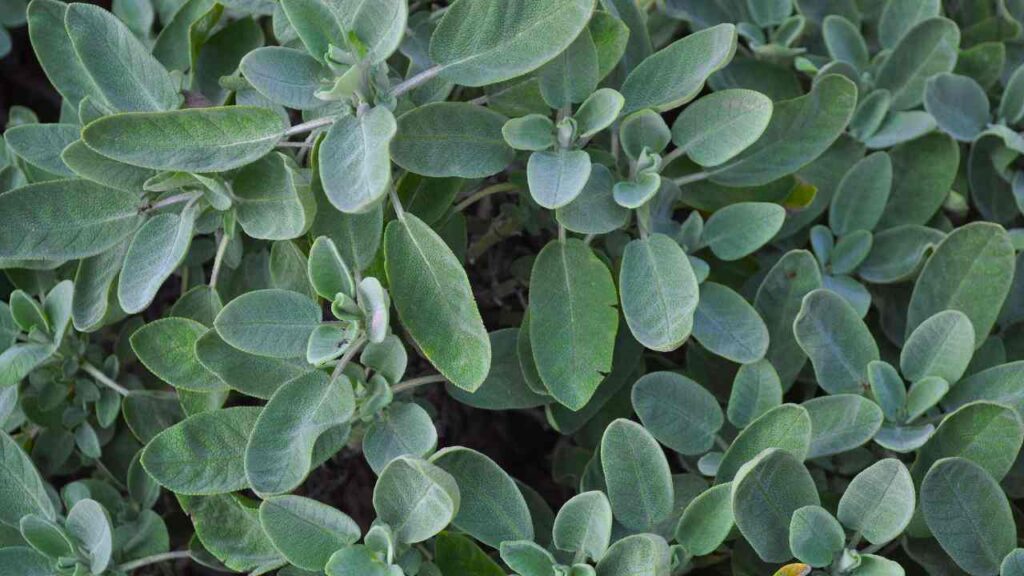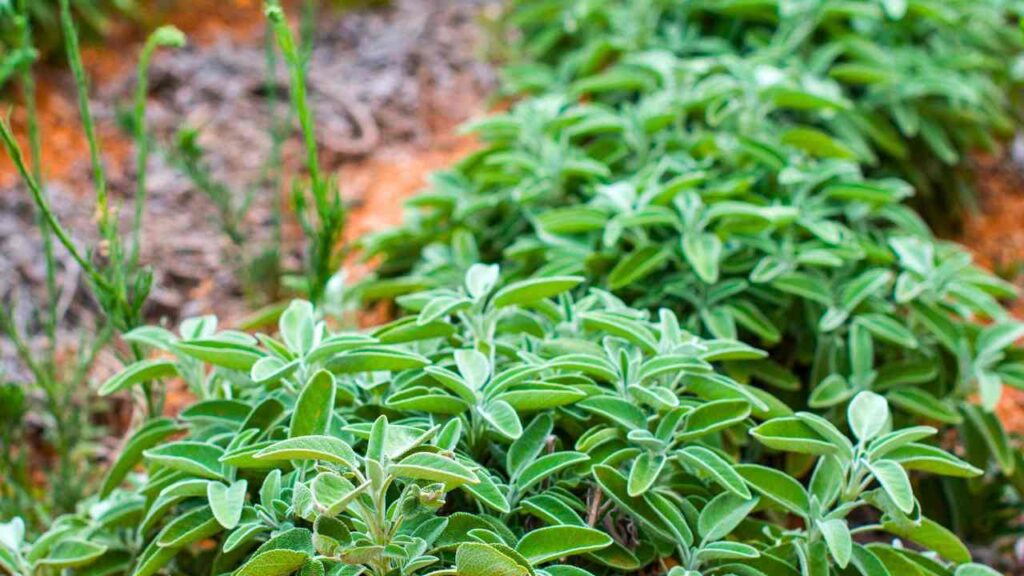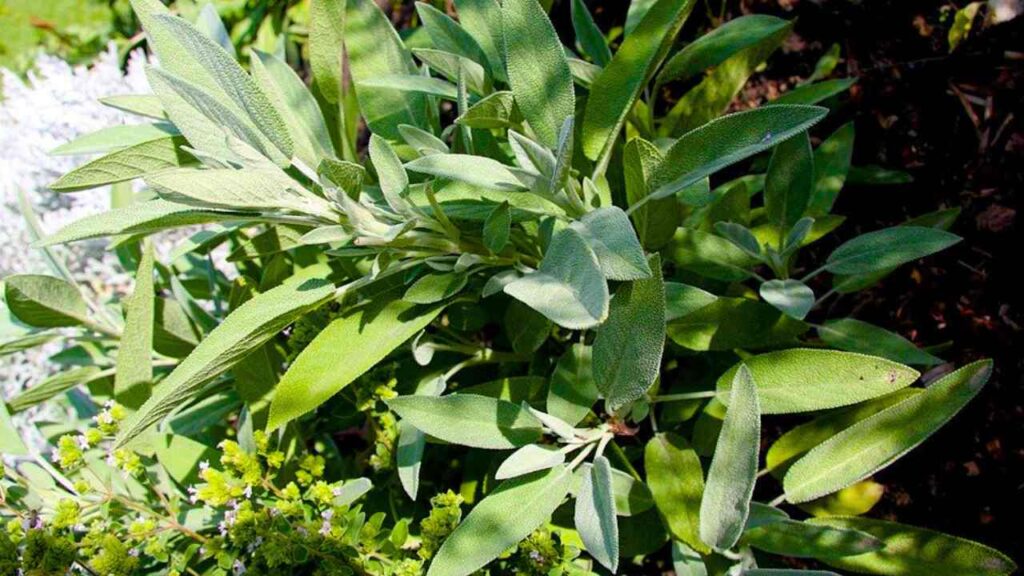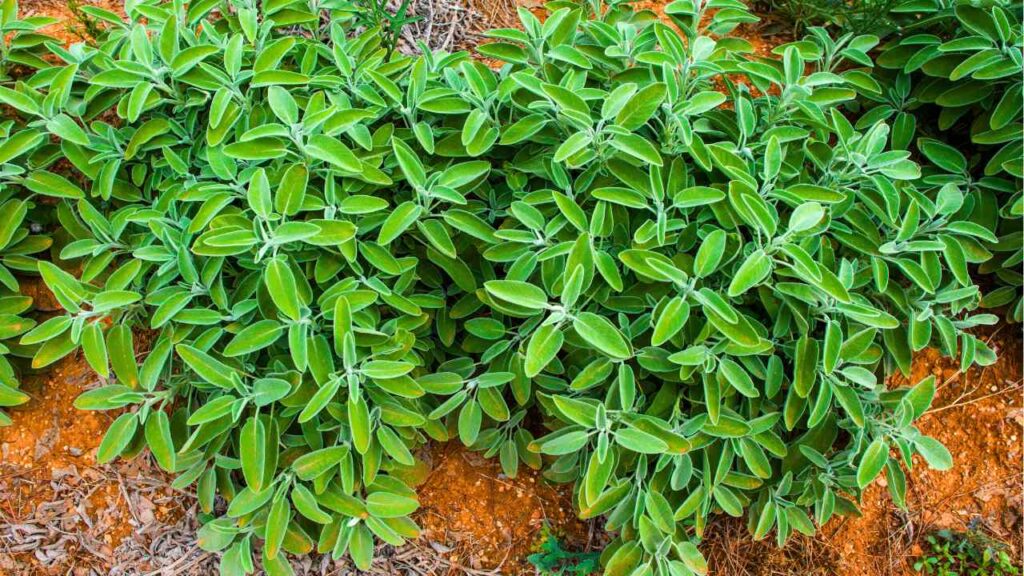The fragrant culinary herb known as sage is native to the Mediterranean region, yet it is simple to cultivate in the majority of homeowners’ gardens. Sage is a versatile ingredient that can be used in a wide variety of meals, ranging from heavy stuffings to light herbal drinks. Not only does it smell delicious, but it also functions as a condiment.
Sage: What Is It?

Because it is a hardy perennial herb that requires little care, sage can be planted just once and then harvested for many years to come. Sage, which is characterized by its fuzzy leaves and strong herbal aroma, is a robust addition to a variety of meals because of these characteristics.
Common sage, also known as garden sage, broadleaf sage, or culinary sage (its botanical name is Salvia officinalis), is the variety of sage that you would most likely want to plant in your herb garden.
There are many different species of sage. There are several cultivars of common sage, such as purple sage, which has leaves that are purple in color, and tricolor sage, which has stems that are not uniformly colored.
A Guide to Growing Sage

Sage needs to be grown in full daylight (or with the help of a grow light), in soil that is well-drained and rich in organic matter or compost, and with adequate air circulation. It is possible to cultivate sage seeds, stem cuttings, young plants purchased from a garden center, or by layering the plant.
1. Sage seeds should be planted in a planting tray indoors in the early spring, up to two weeks before the final frost. This is the first step in the process of planting sage from seed. While you wait for the seedlings to emerge, make sure the soil is kept moist. Within two to three weeks, the seeds should begin to sprout.
2. When it is time to transplant sage, wait until the soil temperature outside reaches between 60 and 70 degrees Fahrenheit before putting seedlings or tiny potted plants two feet apart.
3. To propagate sage from cuttings, take a section of the stem that is three inches long from the beginning of the stem and plant it in vermiculite, which is a porous mineral, or in sand. Roots will begin to form within a period of six weeks, at which point you will be able to transplant the cutting into a container or directly into the ground.
4. Sage can be propagated through the process of layering. To develop a new sage plant through layering, take a very long sage stem and remove the leaves from the middle region of the stem. This should be done while the stem is still linked to the mother plant. The stem should be scraped with your fingernail to cause minor damage to it. After that, the stem should be bent down to the ground, and the damaged piece should be buried in the dirt. For the purpose of putting weight on the buried piece, you might need to place a stone on top of it. After approximately one month, the roots will begin to form, at which point you will be able to separate the new plant from the mother plant.
Sage Plants: How to Take Care of Them

It is not difficult to take care of sage if you have a basic understanding of gardening.
1. In order to stimulate new growth, it is recommended that the woody stems of sage be pruned in the spring. Sage, in contrast to other herbs, maintains its tasty quality throughout the flowering process; therefore, it is not required to remove the flower buds. In addition, the blossoms are alluring to pollinators.
2. Diseases and pests: Sage is susceptible to powdery mildew, which is a type of mold. Through the enhancement of air circulation, mildew can be avoided through regular pruning.
3. irrigation: Sage is a plant that can survive in dry conditions and only needs consistent irrigation during its first year of life. New plants should be kept moist until they reach full maturity, but mature plants should not be overwatered. Make certain that the soil and containers have adequate drainage so that the sage plants are not allowed to remain submerged in water.
4. During the winter, garden beds that contain sage plants should be covered with mulch in areas of the world that experience colder temperatures. Planting sage in containers that can be carried indoors as houseplants throughout the winter months will allow you to extend the growing season and make it more productive.
Methods for Gathering Sage

Sage is only harvested after the plant has reached its full maturity. Sage leaves or sprigs should be harvested on a regular basis once your sage plant has reached maturity. However, you should be careful not to remove more than one-third of your plant.
Sage leaves can be dried by hanging bundles of leaves in an area that is dry and has adequate ventilation at an inverted position. Sage leaves should be removed from their stems and then placed in an airtight container after they have been dried.

